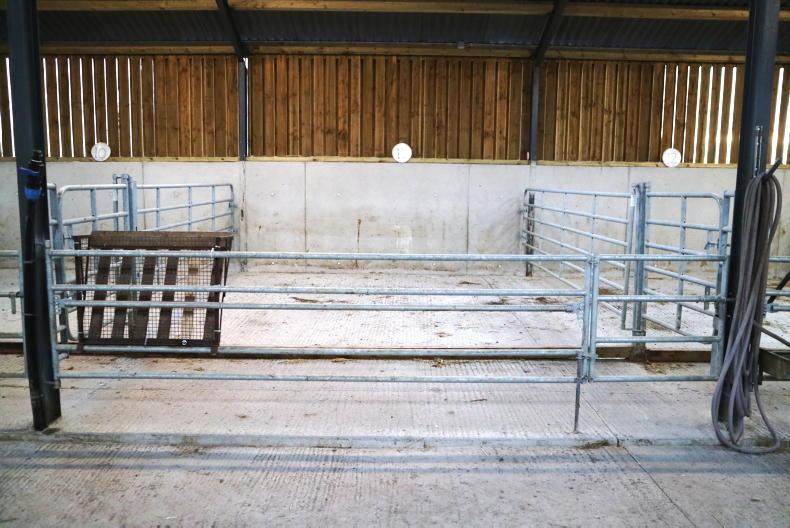The five key factors that need to be delivered in successful calf-rearing facilities are fresh air, a draught-free environment, dryness, warmth, cleanliness and cleanability, according to Zoetis area veterinary manager Charles Chavasse.
Speaking on Monday evening at the Animal Health Ireland and Teagasc Calf Care webinar, Chavasse went on to say that one of the challenges faced in calf housing facilities on Irish farms is that the ideal temperature for calf rearing is between 15°C and 20°C at a time when temperatures typically average single-digit figures. However, he said that this issue can be overcome with sufficient bedding and decent shed ventilation.
Ventilation
Chavasse believes Yorkshire boarding can play a key role in calf shed ventilation. A double line of 6in board with a 2in gap between each board is advisable for sheds in sheltered sites. Where sheds are in a windy or exposed location, the gap between each board should be reduced to 1in.
It is important that the middle of each board inside the shed is in line with the middle of the gap on the outside line of boards in order to eliminate draughts and rain from entering the shed.
Yorkshire boarding v vented sheeting
Chavasse said 6in Yorkshire boarding with a 2in gap allowed 25% airflow into the shed. Vented sheeting on the other hand, although there are many holes in each sheet, restricted airflow to just 5% and therefore he would not see it as suitable for calf housing.
The wood of the boarding is also a better insulator compared to the metal sheeting, which can fluctuate greatly depending on the air temperature which can, in turn, cause a greater fluctuation of the temperature in the shed.
Space requirements
Joe Patton, nutrition specialist with Teagasc, said stocking rates in calf-rearing facilities need to be correct on farms. A floor space of 2m²/calf is required in the rearing shed. Patton went on to say that once there are sufficient facilities for calves on-farm, a tight calving period can lead to better calf health.
He said on farms with prolonged calving periods you often get a build-up of disease later in the calving period. This is often as a result of having calves of different ages with immune systems at differing stages of development mixing within the one airspace.
Draughts
Teagasc beef specialist Martina Harrington said that on some beef farms calf-rearing facilities can be improved, with draughts a common problem on many farms. In order to assess the suitability of the facilities on farm, farmers need to get down to calf level and see where the draughts are coming from. This needs to be done without waterproof leggings or wellies on as they can reduce the ability to feel draughts. Common areas for concern include under gates or along feed barriers.
Harrington said that stockboard fitted along the bottom of gates can be a simple and effective way of eliminating draughts at calf level.






 This is a subscriber-only article
This is a subscriber-only article










SHARING OPTIONS: